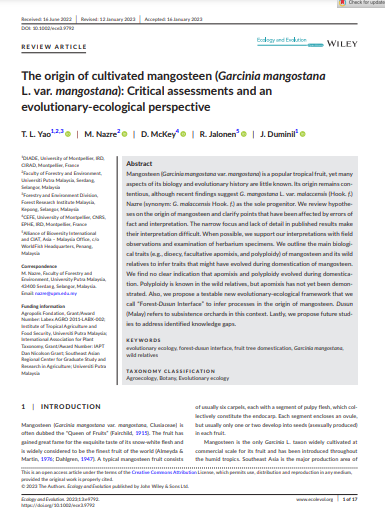Mangosteen (Garcinia mangostana var. mangostana) is a popular tropical fruit, yet many aspects of its biology and evolutionary history are little known. Its origin remains contentious, although recent findings suggest G. mangostana L. var. malaccensis (Hook. f.) Nazre (synonym: G. malaccensis Hook. f.) as the sole progenitor. We review hypotheses on the origin of mangosteen and clarify points that have been affected by errors of fact and interpretation. The narrow focus and lack of detail in published results make their interpretation difficult. When possible, we support our interpretations with field observations and examination of herbarium specimens. We outline the main biological traits (e.g., dioecy, facultative apomixis, and polyploidy) of mangosteen and its wild relatives to infer traits that might have evolved during domestication of mangosteen. We find no clear indication that apomixis and polyploidy evolved during domestication. Polyploidy is known in the wild relatives, but apomixis has not yet been demonstrated. Also, we propose a testable new evolutionary-ecological framework that we call “Forest-Dusun Interface” to infer processes in the origin of mangosteen. Dusun (Malay) refers to subsistence orchards in this context. Lastly, we propose future studies to address identified knowledge gaps.
Yao, T.L.; Nazre, M.; McKey, D.; Jalonen, R.; Duminil, J.

